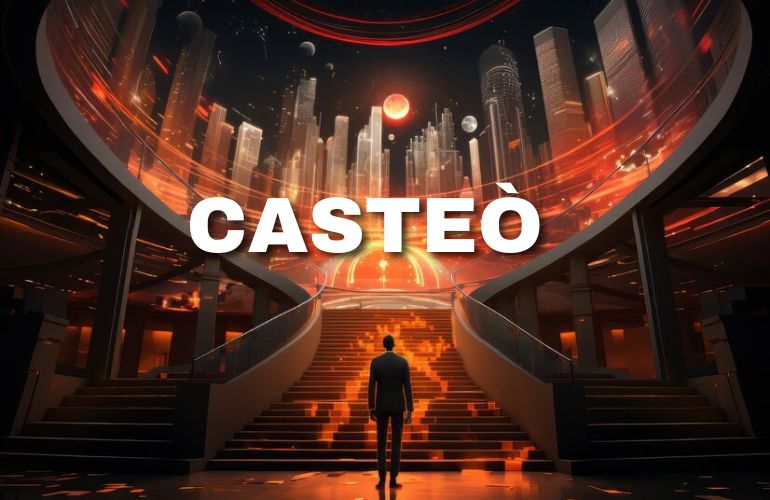Casteò, a term with roots in the Portuguese word “casta,” refers to a social stratification system based on birth, occupation, and lineage. While most commonly associated with South Asia, particularly India, the concept of caste systems has permeated various societies throughout history. This article delves into the intricacies of casteò, exploring its origins, impact, and ongoing challenges.
Unveiling the Origins of Casteò
The exact origins of casteò remain debated, but scholars trace its roots back to ancient India. The earliest mentions appear in the Vedas, Hindu scriptures dating back to 1500-1000 BCE. These texts describe a four-fold social order:
- Brahmins: The priestly and intellectual class.
- Kshatriyas: The ruling and warrior class.
- Vaishyas: The merchant and agricultural class.
- Shudras: The laboring class.
Over time, this system became more complex, with numerous sub-castes emerging within each major category. These sub-castes further defined social roles and dictated social interactions, marriage prospects, and religious practices.
The Enduring Influence of Casteò
Casteò continues to exert a profound influence on various aspects of life, even in the modern era. Let’s explore its impact on:
- Social Structure: Casteò dictates social norms, expectations, and hierarchies. It influences who you interact with, who you marry, and even your professional opportunities.
- Economic Disparity: Certain castes have historically been denied access to education, resources, and economic mobility. This perpetuates poverty and widens the economic gap.
- Political Landscape: Caste plays a significant role in political representation and voting patterns. Political parties often exploit caste sentiments to garner support.
Here’s a table summarizing the key areas impacted by casteò:
| Area of Influence | Description |
|---|---|
| Social Structure | Defines social interactions, marriages, and daily life. |
| Economic Disparity | Perpetuates poverty for lower castes. |
| Political Landscape | Influences voting patterns and representation. |
drive_spreadsheetExport to Sheets
Challenges and the Road Ahead
Casteò presents several challenges in building an equitable society:
- Discrimination: Prejudice and social exclusion based on caste remain prevalent.
- Limited Mobility: Upward social mobility is difficult, hindering individual and societal progress.
- Violence: Caste-based violence and atrocities continue to plague some societies.
Efforts to dismantle casteò require a multi-pronged approach:
- Education: Promoting education and awareness about the negative impacts of caste.
- Affirmative Action: Implementing policies that create opportunities for marginalized castes.
- Legislation: Enacting strong anti-discrimination laws and ensuring their enforcement.
- Social Reform: Encouraging inter-caste marriages and challenging social norms.
FAQs on Casteò
- Is caste the same as race? No, caste is a social hierarchy based on birth and occupation, while race is a biological classification based on physical characteristics.
- Does caste exist only in India? Caste systems have existed in various societies throughout history, including Japan, Egypt, and ancient Rome. However, the term “casteò” is most commonly associated with South Asia, particularly India.
- Isn’t caste a thing of the past? While legal discrimination based on caste is outlawed in many countries, caste prejudices and social exclusion continue to persist. Upward social mobility remains difficult for lower castes, perpetuating economic and social inequalities.
- What are some examples of caste-based discrimination? Caste-based discrimination can manifest in various ways, including denial of access to education, employment opportunities, and public services. It can also lead to social exclusion, violence, and even honor killings.
- What can be done to address caste discrimination? A multi-pronged approach is needed. Promoting education and awareness, implementing affirmative action policies, enacting strong anti-discrimination laws, and encouraging social reform through inter-caste interaction are all crucial steps.
More: Unveiling the Secrets of “Komik Hisashiburi ni Jikka ni Kaettara Otouto ga Ts Shiteta”
Conclusion
Casteò is a complex and enduring social system with far-reaching consequences. Dismantling its discriminatory aspects requires a sustained effort through education, social reform, and strong legal frameworks. By working towards a society where individuals are valued for their merit and contributions, we can create a more just and equitable world.
Note: This article provides a general overview of casteò. The specific manifestations and challenges of caste systems can vary depending on the society and historical context.




